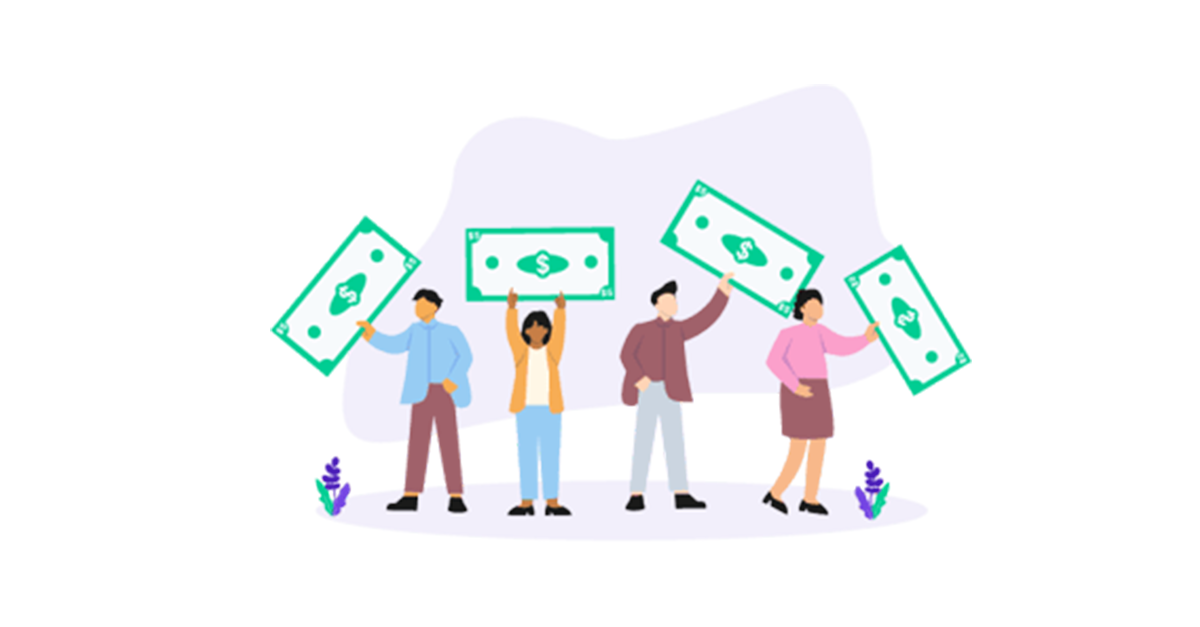Is equity crowdfunding a good fit for your startup? Here’s how it works
Equity crowdfunding is a relatively new addition to the toolset founders have available to raise capital for early-stage startups. It opens up a...
5 min read
 Jeff Erickson
April 6, 2022
Jeff Erickson
April 6, 2022
Over the past few years, the business of raising startup capital has changed drastically. Round valuations have skyrocketed, and people have started closing investments without ever meeting in person.
Perhaps most importantly, raising capital from your community and network has become a major source of funding for early-stage startups.
Gone are the days of a single angel writing one big check to elevate your business to the next level.
Key takeaways:

Community rounds are a way for founders to raise capital from both their personal and professional networks. They’re made possible by new U.S. securities laws (Regulation Crowdfunding), which enable founders to raise up to $5 million per year from their global network, whether from accredited or unaccredited sources.
It’s now legal, and easier than ever, to promote your round publicly. This lets you turn customers, fans, and followers into investors – all conveniently rolled into one line in your cap table.
Whether you’re running a community round to fill up your seed round, or using it as a marketing tactic in your Series A, community ownership has some significant benefits you need to know about.
It wasn’t always possible to raise capital from your community. Up until 2016, it was illegal to raise capital from unaccredited investors. Angel investing was limited to a select group of millionaires, typically concentrated in a small portion of the world – Silicon Valley.
Additionally, companies outside of Silicon Valley struggled to get funding as capital was concentrated and the under-privileged were under-indexed. As a result, founders without strong networks were often forced to accept unfavorable terms to secure funding.
And even after it became legal to raise capital from the crowd, it still carried a negative stigma. Raising capital from your community was seen as a desperate attempt for funding – not something VC-backed companies would ever consider.
How times have changed!
In the early 2010s, industry leaders set out to convince congress to allow anyone to invest in startups. In 2016, the law was changed to allow anyone to invest. However, it was still flawed.
It wasn’t until March of 2021, when Congress updated the laws again, that raising money from your community became not only possible but an attractive and beneficial approach to fundraising.
Now companies can raise up to $5 million of capital from their communities on one cap table line, and they can begin taking reservations immediately!
The negative stigma surrounding community fundraising has evaporated, as VC-backed companies like Mercury Bank and Replit have raised from their communities in tandem with venture capital from a16z and others.
Additionally, with the cultural movement towards community ownership in Web3, many angels and VCs are beginning to recognize the benefits of letting users become investors.

The principal benefit of running a community round is the engagement you gain from your existing community and customers. If your customers become owners of your startup, their Net Promoter Score (NPS) increases, and their churn rate decreases!
These factors create higher LifeTime Value (LTV) across your customer base, as customers are willing to spend a higher share of their wallet on your company, of which they’re an owner, and less likely to give money to your competitors.
When your customers become owners, they’re also more likely to help you find talent, give you valuable product feedback, make introductions on your behalf, and share your product releases on social media, etc.
New customer acquisition is another important benefit of a community round. As one founder testified, “This is the best marketing campaign I have ever run.” Normally, you spend money to acquire new customers. But with a community round, your Cost to Acquire a Customer (CAC) is actually negative! You win new customers while putting money into your bank account at the same time.
Perhaps a more surprising benefit of running a community round is the emotional boost a founder gets. Tyler Hayes, the founder of Atom Limbs, recently spoke on Wefunder’s Adventure Capital podcast, where he shared, “When you raise capital from VCs, you pitch 100 people. 97 of them tell you ‘No,’ and even when you’re successful, only 3 tell you ‘Yes.’ So it feels like ‘No.’ But when you run a community round, hundreds – even thousands – of people all tell you ‘Yes,’ and you don’t even see the nos. So it feels like ‘Yes!’”
If you read through the investor notes of Wefunder startups like Lil Libros or CurlMix, it’s truly inspiring to hear peoples’ motivations for investing. For the founders of these companies, it’s uplifting to receive message after message of encouragement and support. These aren’t just hollow words. They’re directly tied to dollars that customers are investing in your startup. They carry real weight.
Finally, if you slave away building an epic company over a decade – wouldn’t it be great to build wealth for your earliest supporters and champions, as well as for a few rich people? We think so!
Just like raising capital from another source, running a community round takes hard work. Like most good things in life, it takes effort and it can be challenging. Mobilizing your network and community to invest can be a slow process.
However, it takes about the same amount of time to raise money from angels or venture capital firms. Companies that have significant networks and clout are an exception to this rule as they can often raise community capital quickly – sometimes with the help of a single email, as Mercury Bank did.
Another issue with community rounds is the limitation on the amount you can raise per year. Each company is limited to $5 million per year, and the company has to be incorporated within the United States. Additionally, companies are required to disclose top-line financials to a certain extent, depending on the amount raised.
As we mentioned, the stigma associated with community rounds has disappeared. Over the last year, we’ve seen VCs encouraging their portfolio companies to raise from their communities as a way to create super-users and validate their product. Additionally, companies that have raised community rounds have gone on to raise over $5 billion in follow-on funding.
We’ve seen several great case studies of companies running community rounds alongside traditional rounds. Mercury Bank, Levels Health, and Doorvest all raised from their communities on the same terms as top-tier firms.
A community investment round allows startups to raise funding from their customers, supporters, and personal networks. It leverages new regulations to enable broad participation, letting anyone—accredited or not—invest in the company, fostering deeper engagement and shared ownership.
During a funding round, a company raises capital by pitching its business to potential investors, such as venture capitalists, angel investors, or the public. Investors evaluate the company’s potential and negotiate terms, while the company secures the funds needed to grow its operations or scale its business.
Community rounds are a fundraising method where startups raise capital from their customers, supporters, and personal networks, often through platforms that allow both accredited and unaccredited investors to participate. This approach fosters deeper engagement by turning users into stakeholders while helping the business grow.
The era of the community round has arrived. With the regulatory changes in 2021, any negative connotation associated with community rounds has quickly dissipated. Outdated perceptions are peeling away, and community rounds and community ownership are quickly becoming a standard step in the fundraising journey.
As Talia Goldberg from Bessemer Ventures put it, “My favorite co-investor is the community. Startups that align incentives with customers, fans, and stakeholders have an inherent advantage.”
Wefunder, a Public Benefit Corporation, is the first and largest Regulation Crowdfunding platform. They’re leading the community round movement, and we’re proud to call them a partner.
As a Forecastr customer, you receive a discount on Wefunder fees. To learn more and kick-off your community round, visit wefunder.com/raise/forecastr.
Alternatively, if you’re a Wefunder founder, you can get a discount on a great financial model from Forecastr here: www.forecastr.co/wefunder/.
Get notified about new events, free resources, and fresh content

Equity crowdfunding is a relatively new addition to the toolset founders have available to raise capital for early-stage startups. It opens up a...

If you’re reading this, it’s probably because you asked the question, “What is a Series A?”

Boston-based startup Transmit Security is developing password-less identity solutions. Back in June, it raised an eye-watering $543 million in Series...